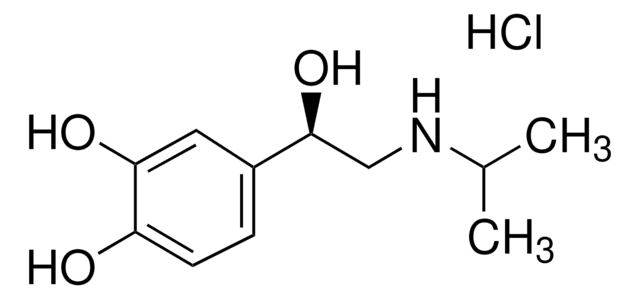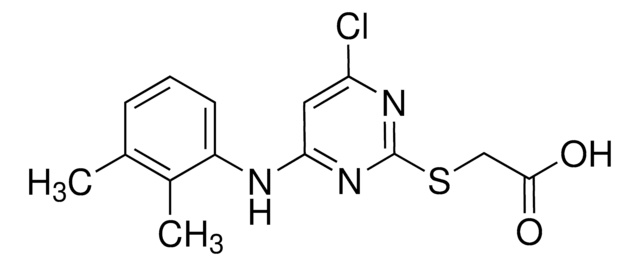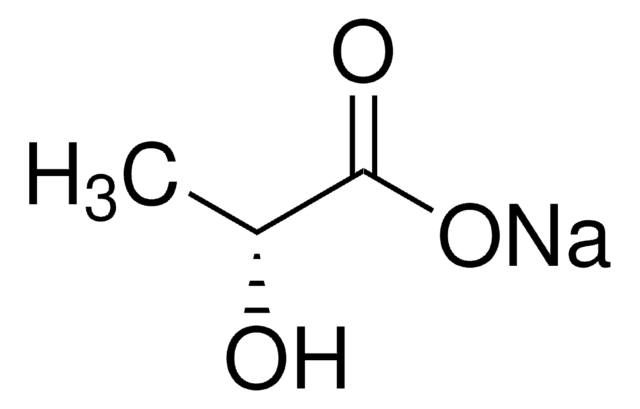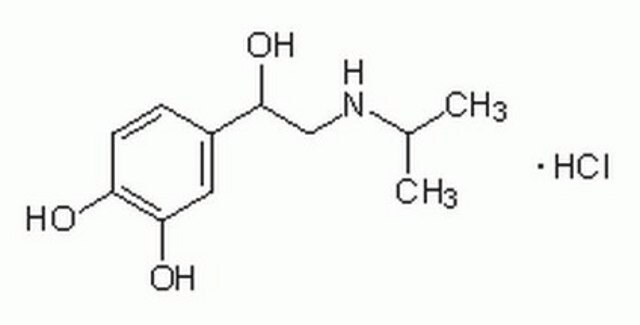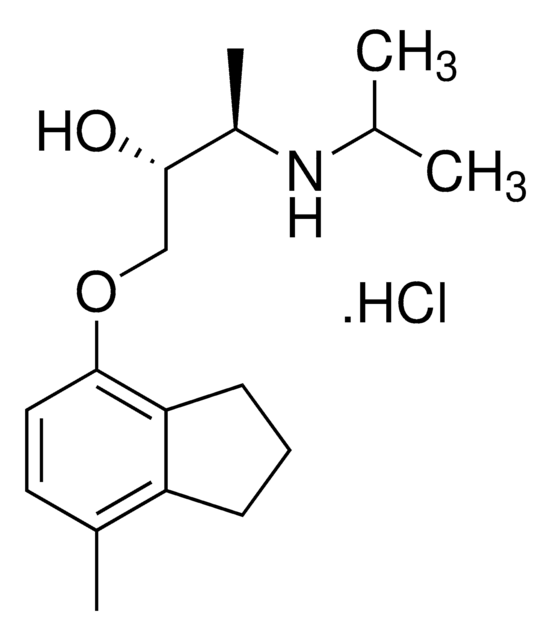C5976
CL 316,243 hydrate
≥98% (HPLC), powder, β3 adrenoceptor agonist
Sinonimo/i:
Disodium 5-[(2R)-2-[[(2R)-2-(3-Chlorophenyl)-2-hydroxyethyl]amino]propyl]-1,3-benzodioxole-2,2-dicarboxylate hydrate
About This Item
Prodotti consigliati
Nome del prodotto
CL 316,243 hydrate, ≥98% (HPLC), powder
Livello qualitativo
Saggio
≥98% (HPLC)
Stato
powder
Colore
white to beige
Solubilità
H2O: 10 mg/mL, clear
Ideatore
Wyeth
Temperatura di conservazione
room temp
Stringa SMILE
O.[Na+].[Na+].C[C@H](Cc1ccc2OC(Oc2c1)(C([O-])=O)C([O-])=O)NC[C@H](O)c3cccc(Cl)c3
InChI
1S/C20H20ClNO7.2Na.H2O/c1-11(22-10-15(23)13-3-2-4-14(21)9-13)7-12-5-6-16-17(8-12)29-20(28-16,18(24)25)19(26)27;;;/h2-6,8-9,11,15,22-23H,7,10H2,1H3,(H,24,25)(H,26,27);;;1H2/q;2*+1;/p-2/t11-,15+;;;/m1.../s1
BFEWLXURNRQQLY-BELDDISZSA-L
Informazioni sul gene
human ... ADRB3(155)
Cerchi prodotti simili? Visita Guida al confronto tra prodotti
Applicazioni
- as a β-agonists to inject mice and study its effect on the expression of mammalian major facilitator superfamily domain-containing protein (Mfsd2a)
- as an adrenergic agonist to stimulate adrenergic response in order to study the metabolic activity of brown, beige and white adipose tissues in mice
- as a β3-adrenergic agonist to inject mice for in vivo lipolytic challenge
Azioni biochim/fisiol
Caratteristiche e vantaggi
Codice della classe di stoccaggio
11 - Combustible Solids
Classe di pericolosità dell'acqua (WGK)
WGK 3
Punto d’infiammabilità (°F)
Not applicable
Punto d’infiammabilità (°C)
Not applicable
Dispositivi di protezione individuale
Eyeshields, Gloves, type N95 (US)
Scegli una delle versioni più recenti:
Possiedi già questo prodotto?
I documenti relativi ai prodotti acquistati recentemente sono disponibili nell’Archivio dei documenti.
I clienti hanno visto anche
Il team dei nostri ricercatori vanta grande esperienza in tutte le aree della ricerca quali Life Science, scienza dei materiali, sintesi chimica, cromatografia, discipline analitiche, ecc..
Contatta l'Assistenza Tecnica.







